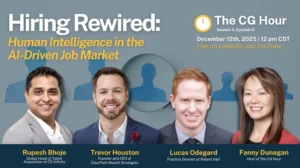Does Data Poverty Lead to More Cyber Attacks?
The way we communicate, share data and use technology to act on those insights is changing – and it’s all leading to the cloud.
On In the Cloud, every week new experts will engage in a fire side chat and will bring their extensive experience in software, IT and mobile solutions straight to you, offering a glimpse into the future of cloud connectivity around.
On this episode of In The Cloud, Host Hilary Kennedy talked with Ari Jacoby, the CEO and Co-Founder of Deduce, a leading provider of cyber-security solutions powered by real-time identity network data. They received an honorable mention from Fast Company’s 2021 World-Changing Ideas Awards in AI and Data. They were also a Top Ten Finalist for the RSAC Innovation Sandbox Contest. They talked about the rise in cyberattacks, the gaps in tools companies have in their cybersecurity arsenal, and how to end data poverty.
Cyberattackers sought to profit from the unprecedented challenges brought on by the pandemic: they disrupted COVID-19 efforts and critical supply chains – supply chain attacks grew 420 percent in just 12 months.
“Between 2019 and 2020, we saw an increase of over 300 percent in account takeover fraud alone,” Jacoby said. “Certainly, COVID was a contributor.”
Part of this was due to workers moving from the office to a home environment. Employees now were using their own devices and their own networks. Everybody was doing everything online, as well, from shopping, ordering groceries, gaming, and for the most part, were living our entire lives online. Unfortunately, the bad guys knew this, too, so they capitalized on it.
Data poverty is another issue heightened during the pandemic. Those without access to data and the internet were forced to live out their lives in the real world and expose themselves to the deadly Coronavirus.
“The idea behind data poverty is that there are just five major companies that control the majority of data required to make high-quality access decisions,” Jacoby said.
Stay Tuned For New Episodes
Follow us on social media for the latest updates in B2B!
Twitter – @MarketScale
Facebook – facebook.com/marketscale
LinkedIn – linkedin.com/company/marketscale









